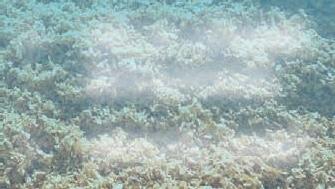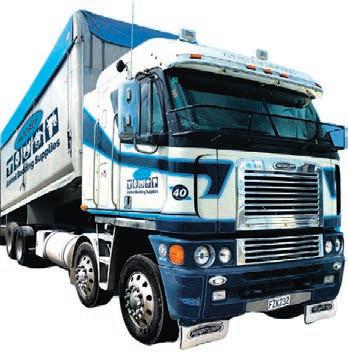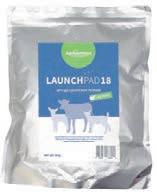Managing contractors
Most people will need help from contractors with Moving Day. Ensure you communicate with them early and often so they know what is expected of them and can give you accurate costings.
Whether on the farm or in the house, the process for managing contractors for Moving Day is the same every time you use contractors on-farm.
CHECKLIST FOR CONTRACTORS
ENSURE YOU:
Have clariÿ ed what it is you need / want the contractor to do


Make clear where they will be going / working
Advise them of anything they wouldn’t expect to be a risk to them
Advise of other activity on farm that could pose a risk to them

Determine what they are going to be doing, what risks that poses to others and how you are going to manage and communicate those risks
Advise them of farm rules (e.g. speed limits) and expectations of behaviour
Advise them of any relevant emergency procedures
Determine appropriate time in/ time out reporting
Get contact details
Make notes on what you
have told them
Have agreed costs
If necessary, you should Print/send electronic copy and mark-up a farm map

TIPS AND TRICKS


Have a standard letter that can be used as the base for all contractors when you do business with them outlining your expectations and risks they need to know about on your farm that they might not expect. Use a prepared checklist to make sure you remember all the steps. It is better to over-communicate rather than under-communicate. Written records such as email provide something you can both refer back to.
Source: www.dairynz.co.nz
Moving Day on Monday 1 st June - road drivers please be considerate

June 1st is traditionally the day when sharemilkers and other farmers change properties. It is one of the biggest days in the dairy farming calendar every year. Over a few hours, thousands of dairy cattle and associated stock will be on the move, along with sharemilkers, their families, vehicles, and household goods. Federated
Farmers is asking for drivers to be aware of these stock movements on rural roads.



We Moooove
“Moving Day involves moving the whole household too. We’re asking people driving in rural areas to be aware that there may be a larger than usual number of stock on the road or in stock trucks. If you encounter stock on the road then please

be patient and please do not honk your horn as that will startle stock.”
Large numbers of cattle on the roads can leave slippery residue, with light rain exacerbating the situation. Motorists should look out for evidence of cattle being on the road – trampled verges, mud and e° uent, and signage warning of livestock ahead.
MOVING DAY 2023 ON THE DAIRY FARM
A Wairarapa farmers’ experience of Moving Day
There is no other day quite like Moving Day in the dairy industry which takes place on June 1st every year.

That’s when share milkers, farm managers and others in the dairy industry move to new jobs on new farms as part of their career progression in the dairy industry.


The date is set by the fact that this is a comparatively quiet time of year for dairy farms, with cows dried o˜ , and calving yet to start.
This year contract milkers Adam and Becs Giddens won’t be going through this huge upheaval, but over the past decade they have experienced their share of moving days. Their ÿ rst move, from the South Island to the North Island, wasn’t too challenging as at that stage they didn’t own their own herd.

Their last move was in 2022 from Carterton to Eketahuna where they will be staying put in 2023.


Asked if Moving Day is a big hassle – “in short, yes,” says Adam.

“You are moving to a new job, a new farm and new home. Cows, machinery, house contents all have to be shifted.






“And our three children have to go to a new school. You have to make new connections, depending on if you are moving to a new area or not.

“When we moved to Eketahuna, we were only 45 minutes up the road from where we were before so we already knew a few people, but there were still a lot of changes.



“And you are starting your new job of June ÿ rst as well. So you are learning a new farm and a new job on the same day that you are arriving. There’s no break.”
The logistics are extraordinary as not only are people moving on to a new farm on June 1st, but that is the day the former residents are moving o˜ the farm and on to their new farm.
“You are shifting your cows on the farm as they are taking theirs away. So you have all these stock trucks lined up. You have to feed all the cows as they wait to get o˜ the truck. There are all these things to navigate.”
Adam and Becs start planning their move around two months before the day.
Like many, they enlist the help of family and friends to help them on Moving Day.
“The most important thing is to get friends and family around you and to have good communication between everyone. For example, talk to the person exiting the farm to make sure you are all on the same page. And be ready to adapt as there is always
something that does not go quite right.”


Adam recommends making sure someone is allocated the job of making sure everyone is getting fed on the day –buying takeaways, making sandwiches or whatever – and making sure they get delivered to where everyone is.
“It can be a long day. You start at 5am in morning and are














still going at eight or nine at night.”
Adam also emphasizes how important it is that boxes are well-labelled with what is in them.
“Everyone is so busy that when you get to the end of the day when you want to make your beds and so on, you want to know where everything is.”
Fitness & feed requirements need attention around Moving Day




On the day of transport, stand cows o˜ green feed for four to 12 hours before the journey. They should have access to good quality hay, baleage or dry feed and water.
The next few weeks is a busy time for farmers and transport companies nationwide, shifting stock between farms, to wintering or as cull cows, as part of the dairy industry’s annual Moving Day (June 1) move.

Dairy farmers planning to shift stock should pay particular attention to the cows’ ÿ tness for transport and their feed requirements, DairyNZ says. Preparing cows for transport should cover o˜ a range of areas, from the cow’s ÿ tness for transport through to ensuring the truck is in good order.


Preparing stock for transport should begin several weeks out – from booking the transport provider to ensuring the cows’ feed requirements are met throughout the transition from one farm to


the other. A good place to start is with diet requirements.
A feed transition plan should be in place for cows going on to a new feed, to ensure the cows adjust to it over seven to 10 days before. If you have crop on the milking platform that was planted for transitioning, allocate one to two hours of crop each day, while grazing pasture, feeding silage and still milking.

Regardless of feed type, all cows should receive a diet containing 12-20g of dietary magnesium per day for three days either side of transport – if dusting CausMag, this equates to 80-100g/cow/day. Stress during transport does cause blood magnesium levels to signiÿ cantly drop. Dusting pasture with an appropriate supplement the week before will build blood

levels. Magnesium bullets should be considered for cows in late pregnancy, as they are particularly at-risk.



On the day of transport, stand cows o˜ green feed for four to 12 hours before the journey. They should have access to good quality hay, baleage or dry feed and water.
Use a grazed out paddock or stand-o˜ pad, rather than concrete. A grazed out paddock is often best, as it gives cows plenty of space to lie down.

If in doubt about an animal’s ÿ tness for transport, contact your vet.
Have a team member who is skilled in transporting animals supervise the process on the day. Pregnant cows are worth looking after well, they are a valuable asset.”
MOVING DAY 2023 ON THE DAIRY FARM
Make sure NAIT is great on moving day
Moving Day is the busiest time of the year for livestock movements. Good biosecurity practices, including NAIT compliance, are critical over this period.

When NAIT compliance is compromised, our traceability system is threatened, and we run the risk of having a system that will not perform in the event of another disease outbreak.

When you move your herd or change your job on Moving Day, you will need to update NAIT and TBfree information before and after you move.
STEP 1: Remember the important NAIT timeframes to ensure you remain compliant
STEP 2: (should be done before Moving Day)
If you are a Person in Charge of Animals (PICA), you must:
Tag all your animals with NAIT tags and register them
Complete an Animal Status Declaration (ASD) form
Prepare a Declaration to Livestock Transporter (DLT), if your transporter asks for it.

STEP 3: (Before, during and after Moving Day)
MOVING WITH THE HERD
If you are moving farms with the herd (sharemilkers) you must do the following:
Register a new NAIT Number
Deregister your old NAIT number (NN) - you should only do this once you have no more outstanding movements or animals on that NN
Contact us on 0800 482 463 or email us at info@ospri.co.nz with your new location so we can update the TB Free Programme.
MOVING WITHOUT THE HERD
If you are moving farms without the herd (farm managers, contract milkers) you must do the following:
Complete, sign and submit a PICA change form to let us know the new PICA at the NAIT location
If you are going to become the PICA at another NAIT location (taking over an


existing herd) ensure you are correctly registered as the PICA for the new herd


If you’re using third-party software (like MINDA or myHERD) to update NAIT, or allowing stock agents to update NAIT on your behalf:
Let your provider know your new NAIT location number/s
Assign your provider access to your NAIT account as an information provider.
STEP 4: If you are registering any new grazing blocks, you must do the following:
If you’re remaining at your current NAIT location but have acquired a new additional grazing block you must add the grazing block under your current NAIT location. If you try to add it under your current NAIT location, but it falls out of the location requirements, you will need to create a new NAIT location for the grazing block.
NOTE: Movements must be created in NAIT for any animals sold or sent away to grazing within 48 hours of the movement taking place
BUYING ANIMALS
If you buy animals, check
Important NAIT timeframes
Orientation an opportunity to start off on the right foot
Orientation is the introduction your employees have to their new job and your farm.
Following a systematic process of introducing sta˜ to their new job and the business will set your new sta˜ up for success.
Orientation provides the best opportunity to start the employment relationship
GETTING STARTED
Orientation starts the day your new employee signs their employment agreement and continues for at least three months right up until the end of their ÿ rst year - when they have experienced everything on farm.
Keep in touch with your new employee before they start.
REMEMBER TO...
Follow a good orientation process - don’t just leave it to chance that everything will get covered.
that they comply with NAIT requirements before you bring them on to your farm.

NEW HERDS
If you establish a new herd, you need to:

register a new NAIT location
register the herd for TB testing, and
after the animals you’ve bought have arrived, record in NAIT that you received them.
INTRODUCING NEW ANIMALS TO A HERD
If you’re adding new animals to your herd, you must record the movement in NAIT. If you’ve moved to a new farm, make sure the movement is
recorded to the NAIT number at the new location.

IF YOU DON’T UPDATE NAIT








Keeping information up to date in NAIT is important for tracing animals for both disease management and biosecurity.
If you forget to update your NAIT records and keep using your old NAIT number, your movements will be for the wrong farm, which makes tracing a lot harder. If you forget to update your records, call our Support Centre as soon as possible so they can help put things right.
Source: www.ospri.co.nz
o˜ on the right foot and to ensure expectations are clear from the beginning, as your new employee will be able to operate safely and quickly contribute to the team which will avoid mistakes.
Spending time with your new employee making sure they understand what is happening, how the farm works, the way you do things and how they ÿ t in means they will get up to speed quicker.
This will lead to improved work performance, increased satisfaction and motivation for them and reduced stress for you and the team.
Compile important documents that need to be kept for an employee’s ÿ le. Plan an orientation as a priority by identifying key areas that need to be covered to get the new person started.
Allow for time and support to be provided to follow through on the process. Include key things such as an overview of your business, meeting the team, key areas they are responsible for, explanation of your expectations regarding your farm system, timesheets, house inspection.
Assess skills of the new employee as you go and create a training plan to bridge any gaps. Set aside time to ensure that this training happens.
The QuickStart orientation kit available online at www. dairynz.co.nz can guide you through the process and ensure all key areas such as health and safety, farm policies and procedures, the farm business, completing paperwork, employment terms and conditions, rules and conduct, and position expectations are covered.
Consider how you can make an employee and their family’s transition to a new farm and community run smoothly. Remember that orientation is never just a one day process. Aspects of orientation are likely to continue over a whole year as a new employee learns what to do during the seasons. Ask a new employee on a regular basis how it is going and allow them time to apply their farm skills to your farm business.
You can ÿ nd more information and advice at dairynz.co.nz

Source: DairyNZ
We are 100% New Zealand owned and operated. All of our products are produced from all-natural limestone, quarried right here in Wairarapa. We don’t use unnecessary additives or chemicals and offer both organic and non-organic options.


